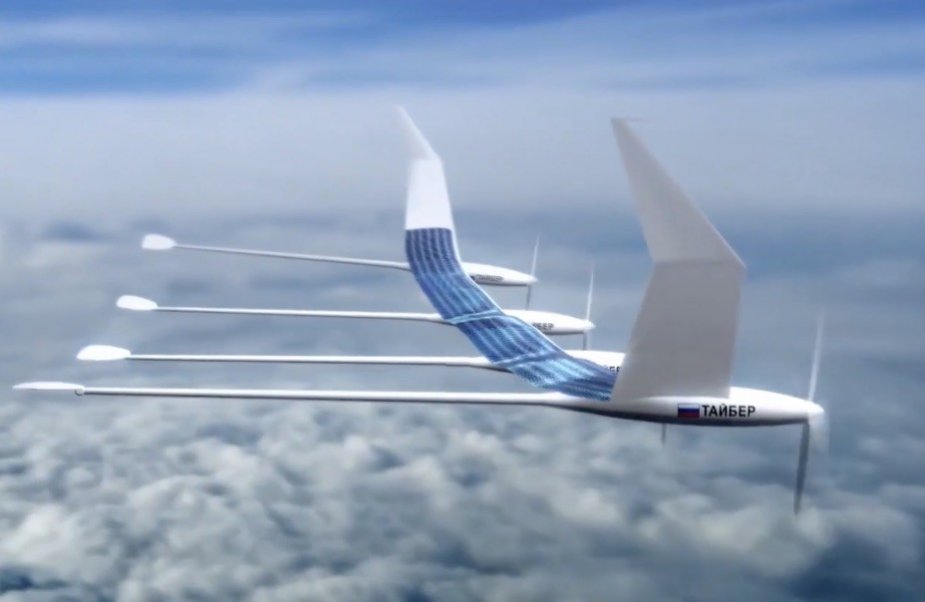High-altitude drones powered by solar energy offer a prospective guideline in unmanned aviation. Such projects exist in technologically developed countries, including Russia, the Army Standard writes.
Follow Air Recognition on Google News at this link
 The design of La-251 drone is based on the Sova Drone Solar-powered and Russian-made. (Picture source: Tiber.su)
The design of La-251 drone is based on the Sova Drone Solar-powered and Russian-made. (Picture source: Tiber.su)
Russia develops several projects of solar drones. They have to accumulate power from the Sun in daytime and consume it at night.
Such drones have to fly above commercial air traffic to obtain optimal effectiveness, as there are no clouds and minimal wind there. The unmanned aerial vehicles (UAV) can engage in a broad range of missions demanding long flights. They can hover above the assigned areas for reconnaissance, provide communications, etc. Solar drones can take over some missions of satellites or even replace them. In contrast to a spacecraft, a drone can land for an overhaul or upgrade in case of a breakdown.
Sova UAV is a prospective Russian solar drone. It was designed by Tiber Company together with the Prospective Research Fund. A drone model was made to demonstrate the technologies. The craft has a multi-fuselage scheme with a long 9.5-meter wingspan. The design and materials produced a takeoff weight of 11.8 kg.
The capacity of solar batteries on the top of the wing exceeds 270 V. The watt-hour capacity of lithium-ion batteries is 1272.
Sova has a distributed control scheme with several synchronized autopilots. It does not need a rigid wing against bend and twist and the weight decreased as a result.
The designer said the technical solutions ensured resistance of the craft to atmospheric disturbances due to active control of the deformation of construction elements. It promoted flights in bad weather without risking the destruction of the craft because of wing bend.
The company held a series of tests to keep the necessary form of the construction in the limits of permissible deformation. The trials were held in a relatively turbulent weather, high thermal activity and the wind speed of 5-8 m/sec at the ground with gusts of 12 m/sec.
Although the drone was lost during trials, the project received a positive preliminary assessment.
The Lavochkin Production Amalgamation has been also engaged in solar drones since 2012. Two demonstrators were created and displayed to the public several years ago.
The design of La-251 drone is similar to Sova. It has a 15-meter wingspan and a takeoff weight of 150 kg. Solar batteries account for a third of the weight. Electric batteries have a capacity of 7000 W/hour.
Four nacelles with electric engines are integrated into the wing to rotate the propellers.
© Copyright 2020 TASS. All rights reserved. This material may not be published, broadcast, rewritten or redistributed.
















